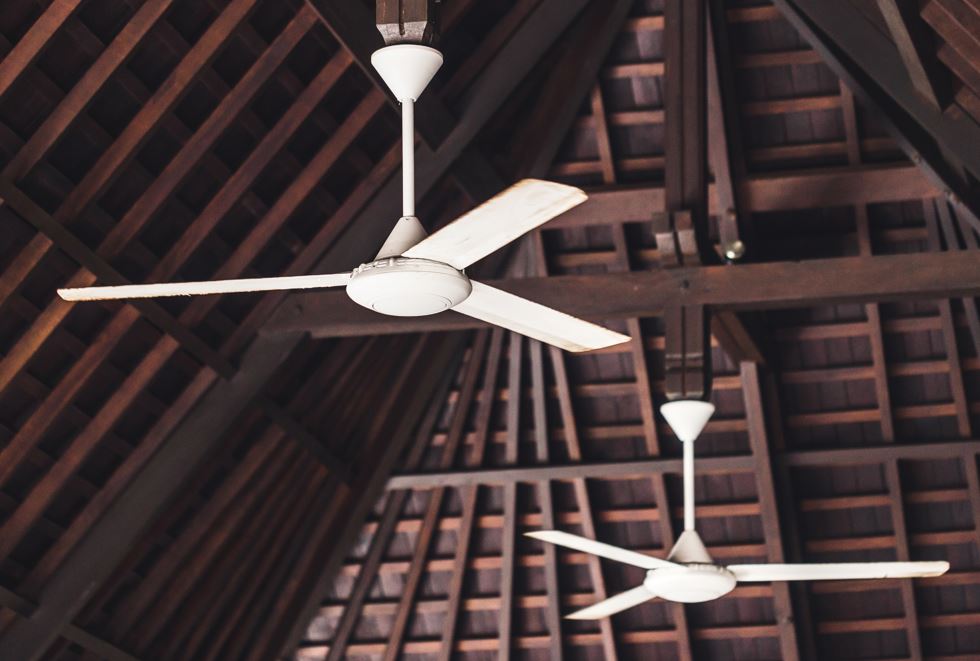As summer approaches, many searches for an appropriate ceiling fan to keep calm under its scorching rays. Unfortunately, with so many types of ceiling fans available, choosing one for yourself can become very confusing.
Various factors help identify India’s top ceiling fans, including speed, balance, and blade count. Blade count is particularly relevant because all aspects are closely connected, prompting many to ask themselves, “Which fan is better, three or four?”
To alleviate some of your confusion, we have created this piece that provides an unbiased overview of three- and four-blade fans to make selecting one easier.
How Do Ceiling Fans Operate?
Before we delve further, let’s briefly examine how ceiling fans work to keep spaces cool. They do not alter humidity levels in a living area; instead, they provide a cooling effect by increasing sweat elimination through convection air movement – fascinating scientific principles of heat exchange through convection that scientists find fascinating! For maximum effectiveness when selecting an efficient fan to meet this need for cooling, the best are those capable of conducting this process while using minimal power consumption and producing an appropriate volume of air movement.
See also: 8 Things to know before buying a ceiling fan for your home
Advantages and Disadvantages 3 Blade and 4-Blade Ceiling Fans
3 Blade Ceiling Fan
3-blade ceiling fans you can find them in the market in a common way, as they can be used commercially and domestically.
Popular usages include commercial environments as well as domestic use. Due to being mass-produced, they tend to be cost-effective since less is required compared with their production volume; additionally, they’re known for being energy efficient as they create large volumes of air at reduced energy usage; although for individuals with keen eyes, this fan may stand out due to its proportions or mass-produced designs causing its use within any given space!
Research-based studies have proven that using three-blade fans provides excellent stability for motors while offering maximum throw.

Advantages of 3-Blade Fans
One key difference between four and three-blade fans is their weight; as the latter requires less effort to turn, friction reduction allows it to ride faster, resulting in the quicker circulation of air and an added cooling effect that’s ideal during hotter summer months.
Price is an important distinction to be mindful of when discussing three versus four-blade fans. Comparing their costs will reveal that fans with three blades are significantly less costly.
Disadvantages
But the 3-blade fan’s main drawback lies in its noise levels. Its weight allows it to spin faster and increase air pressure, resulting in a loud noise that may interfere with sleep. Although its noise level may not be unpleasant, it could prove disruptive when trying to sleep.
Once we have evaluated all of the pros and cons, it can be concluded that a fan with three blades is ideal for air circulation in industrial settings because its stronger airflow requires less cooling from an additional source like air conditioning. Furthermore, its energy bill will likely be much lower than one featuring four blades.
See also: How do You Take Care of Your Smartwatch (Top 8 tips to extend your smart watch’s life)
Four Blade Ceiling Fan (Tiers of Fan Design)
The four-bladed ceiling fan is an eye-catching, eye-catching unique design. While not widely seen in homes, manufacturers and designers market them as exclusives; designers pay particular attention to creating four-bladed fans that draw the eye as attractive additions with excellent design appeal; however, due to limited production numbers or sales. Prices tend to be higher because only limited production runs or sales of such fan designs are available.
Four-blade ceiling fans are less effective at producing airflow due to the aerodynamic drag they create. Furthermore, four-blade fans place additional strain on bearings and motors and require stable models with higher ratings for optimal functioning.

Advantages of 4 Blade Fan
According to its name, four-blade fans feature four connected blades attached to their mount that help make it more stable and quiet.
Multiple blades may result in increased air resistance that must be counteracted with weight. Air resistance leads to slower but steadier fan movement which decreases noise output.
One key difference between three-blade and four-blade fans lies in their designs; four-blade fans typically feature fashionable styles with decorative finishes while their counterparts usually remain unadorned and plain-faced.
Top four-blade ceiling fans pair with air conditioners to circulate cool air across an entire space without creating noise pollution.
Disadvantages of 4 Blade Fan
As with the fan with three blades, four-blade fans also come with their drawbacks. One major factor should be considered when discussing 3 Blade Fan VS 4 Blade Fan: four blade fans can be more expensive; purchasing one may prove costly for many pockets. Furthermore, their heavier weight and air resistance could require additional power from your motor to spin them effectively, leading to higher electric bills and further expenses.
An increase in motor drag will decrease its rotation speed, making the fan ineffective at providing cooling effects fully.
My research supports my hypothesis that this bedroom fan is superb because its constant airflow keeps a room cool when used alongside an air conditioner, without creating noise that disrupts restful slumber.
See also: BLDC Fan Vs Normal Fan (Speed, Power Consumption)
3 Blade Vs. 4 Blade Ceiling Fan? Which one to choose?
Physical laws dictate that expanding the number of blades increases airflow; however, this often goes overlooked in practice as air resistance becomes an issue.
Three-bladed fans provide less airflow due to having three fewer blades but operate at higher speeds due to reduced aerodynamic resistance. A 3-bladed fan can also be controlled easily while loud noises are not an issue – making this an ideal choice for Indian households, where speedy cooling needs are particularly prevalent.
Four-bladed fans offer more excellent airflow due to their increased blade count but at slower speeds due to aerodynamic drag. Four-bladed fans also increase power load and can be helpful in colder climates where speed may not be necessary for operation. Consumers must make educated choices when purchasing ceiling fans.
Conclusion
Fans are essential to every home, yet selecting one may prove challenging. By comparing the three and 4-blade models discussed above, it should be easy for consumers to determine what model best meets their needs quickly.
